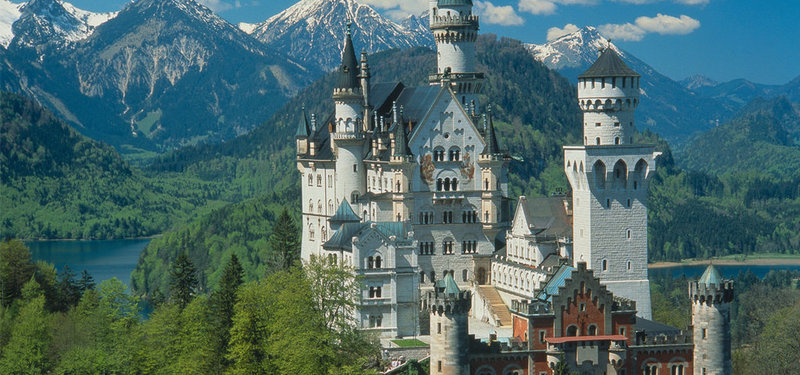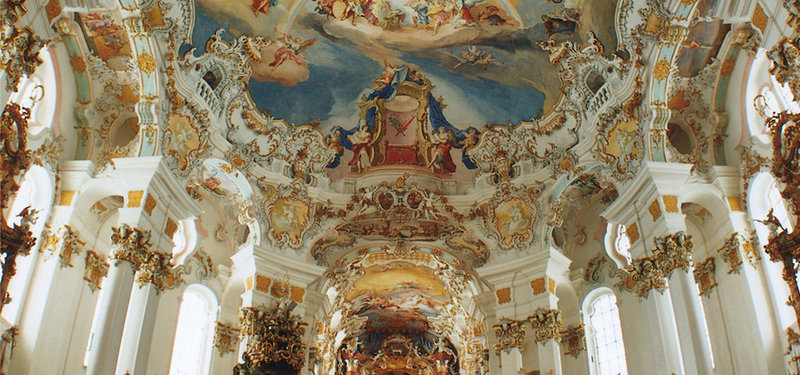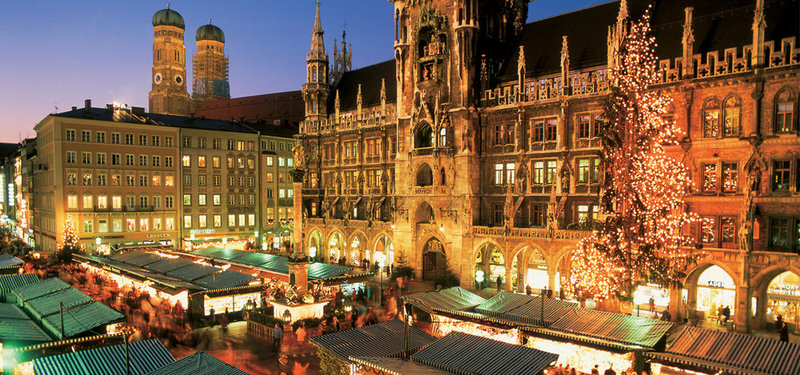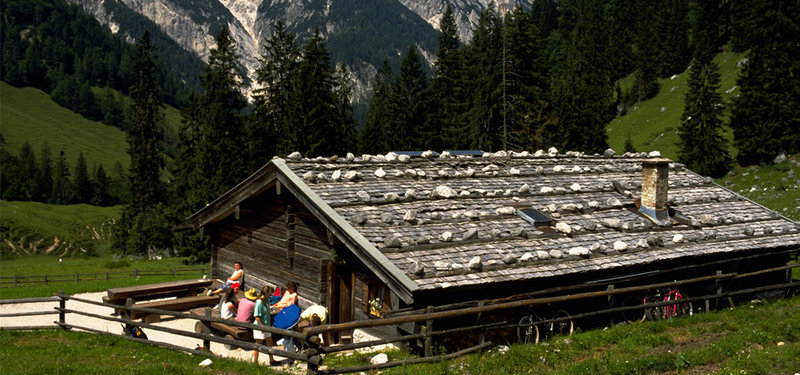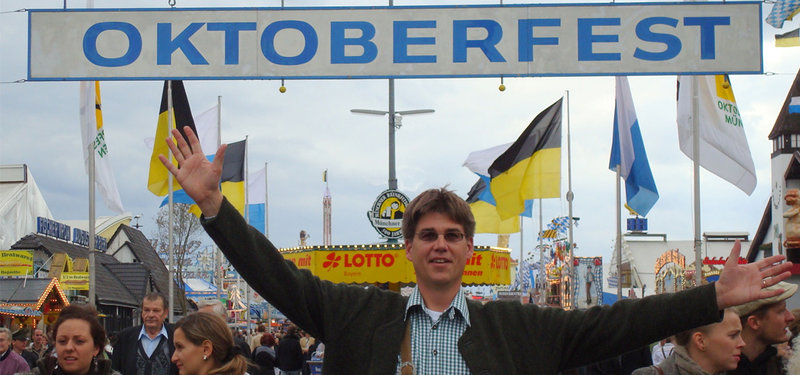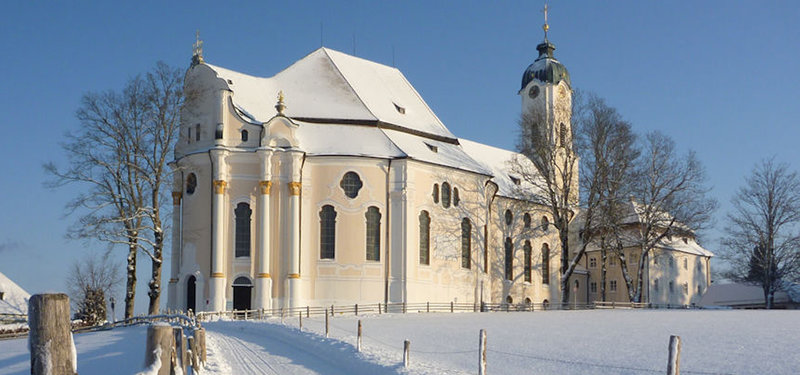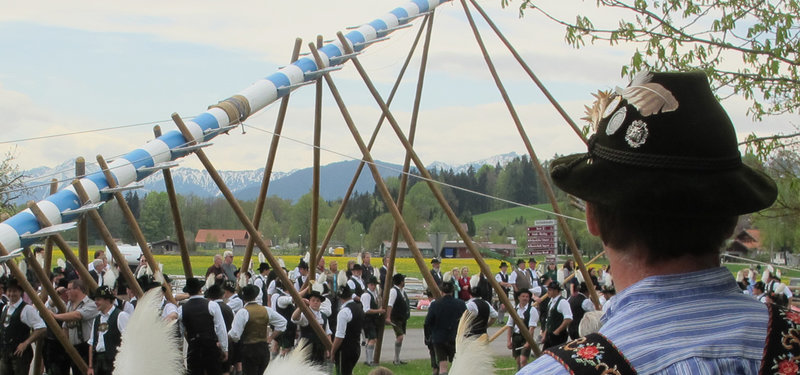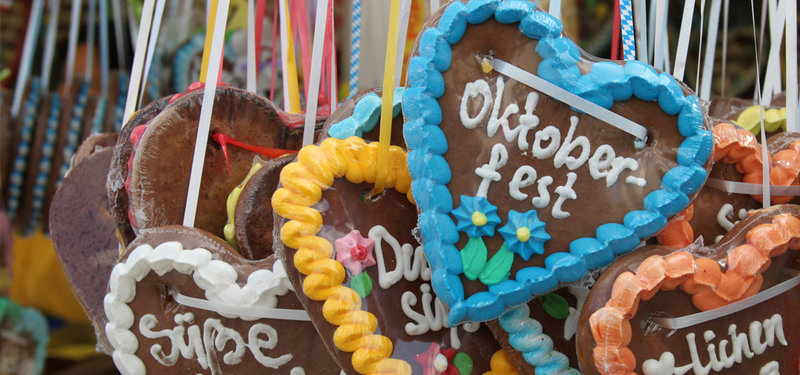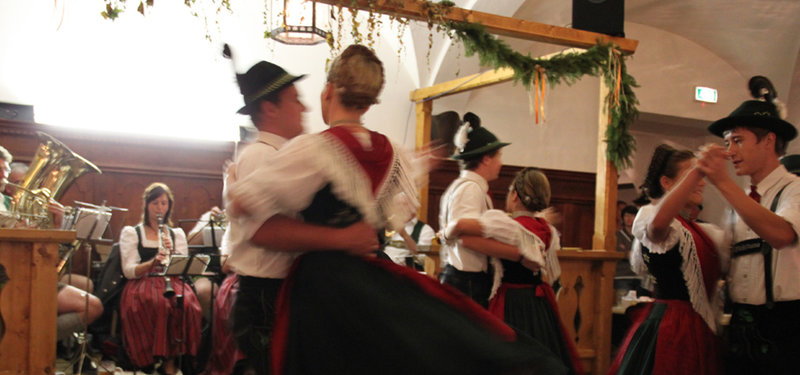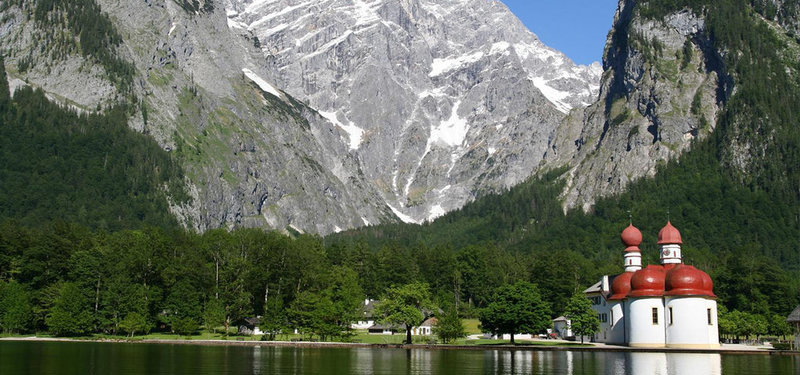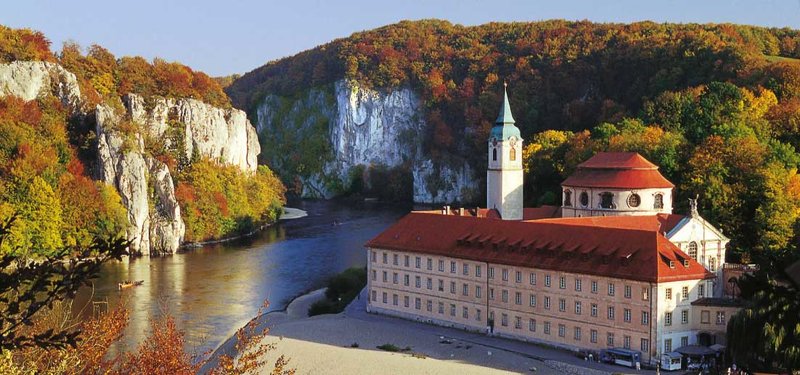Helles
Ask for „beer“ in Munich and a Helles will appear. Helles refers to the color of the beer and it is a light, pale lager typically 4.7% to 5.3% alcohol by volume. In contrast to a pilsner, the Helles is not bitter and some Germans consider it rather sweet. Quirky German grammar sometimes renders “Helles” as “Hell” and “Helle” and a few other endings, but you will always be understood with “Helles.” When translated to English, sometimes the word “light” will be used: This refers to color, not calories.
Nowadays Helles is the big seller in Munich, but before the late 1800`s the preferred beer was the “Dunkles” - a dark lager. With Munich’s notoriously hard and carbonate water and its roasted malts, this was the default. Helles hop content is minimal and consists only of noble hops, mainly from Tettnang, Hallertau and Spalt. This preserves the malty notes of the style. As a classic blond German lager, Helles is aged/lagered near the freezing point for weeks after fermentation to bring out its delicacy and softness. (Dornbusch, 1997)
Color, what color?
Most people also had no idea what color their beer was since they were drinking it out of a Keferloher, the local, 1-liter grayish version of a beer stein. The beer stein, typically measuring 1 l (33 oz), had remained the drinking vessel of choice in Munich until the turn of the 20th century. Since light colored beers appear so appetizing with their clarity and brilliance, the explosion in the use of glass, instead of beer steins, largely contributed to the success of the Helles. (Seidl, 2011).
The Spaten brewery is considered the creator of Helles and, at one time, Spaten was an innovative brewery, often shaking things up. Gabriel Sedlmayr der Ältere (1772-1839), brewed at Hofbräu and then purchased the smallest of all the Munich breweries, the Oberspatenbrauerei in 1807. He was the first brewer in Munich (1807) to use an English Kiln which works with hot air instead of smoke to dry. He consistently used the thermometer, which was contemptuously dismissed by his brewers. Spaten was the first brewery to employ a steam engine in 1821. In1884, the brewery logo was developed – the white spade/shovel on a red background with the owner's initials, G.S.
Brewery Spies
Back in 1833 Bavarian brewing was largely a manual effort whereas England was well underway with industrializing the process. At age 22, Sedlmayr the Younger went with his friends, Anton Deher from Vienna and Georg Lederer from Nuremberg. (Stix, 2019) Before reaching England and Scotland, they made long stops at other breweries. But in England they saw how to control the original wort content (Würzegehaltes) and monitor the fermentation process by using the Saccharometer. On the European continent, this device was completely unknown. The English brewers were not interested in revealing any of their industrial secrets to the young brewers. The young men were clever: They had a walking stick with a false bottom, allowing them to take secret probes from the brewing process to later reverse engineer.
“Paler-than-Dunkel” lagers were tentatively introduced by Munich’s breweries to their home market starting in 1841, with the Spaten Brewery’s first Märzenbier. In 1872, the Franziskaner-Leist-Brauerei came out with its Helles Export Bier, which was not actually a Helles, but yielded the foundation recipe of what was to become today’s Spaten Oktoberfest beer. (Franziskaneer-Leist was operated by the other Sedlmayr son, Josef). In 1893 an even paler brew, the Münchner Gold, an imitation of the pilsner from Pilsen by Hacker-Bräu (now Hacker–Pschorr).
Spaten finally introduced the first “real” Helles on March 21, 1894, and sent it for market testing to Hamburg, where it was a hit. The Munich natives, therefore, finally got their first taste of the new brew on June 20, 1895, under the label of Helles Lagerbier, a designation for which the German Imperial Patent Office awarded a registered trademark that same year.
Some other brewers were not happy with this new, non-traditional beer. On November 7, 1895 at a contentious meeting of the Verein Münchener Brauereien (the Association of Munich Breweries), some owners drafted an anti-Helles resolution aimed at preserving the Dunkel. The ban on Helles didn’t quite fly and it was only a matter of time until the reluctant owners realized that Helles was the future. But, it did take the Paulaner brewery until 1928 to acquiesce! Outside Bavaria though, Helles remains virtually non-existent. (Seidl, 2011)
Serving Suggestions: Temperature, Glassware, and food pairings
Temperature: The ideal serving temperature for a Helles is stored at 4-7 Celsius to achieve the perfect serving temperature of 5–8 Celsius (41 – 46º F). (Deutscher Brauer-Bund e.V. ).
Glassware: Munich is known for serving its beer in a giant 1-liter glass we call a Maßkrug. (Not a Stein - Steins are ceramic). This is the worst way to enjoy a beer and this glass is only used in beer gardens or festivals when getting a refill will take too long. Not only does the beer tend to get warm, the thick rim of the glass is truly terrible. If guzzling is your goal, this is your vessel. But for real enjoyment, we ask for a Willi Becher. The fine rim of this glass directs the beer perfectly on to the palate. According to Garret Oliver, “the best beer glasses bear a strong resemblance to wine glasses. The rim, preferably thin and often slightly flared, presents the beer directly to the palate without the sensory interference of a large chunk of glass. The bowl of the glass evolves, holds, and concentrates aromatics emerging from the liquid. Because most of our sense of taste is actually a sense of smell, this aspect is critical.” (Oliver, 2011)
To be sure of the size, you can ask for a “Halbe” (a Hoibe in Upper Bavaria, ein Seidla in Franconia). This will ensure you get the correct size since asking for a kleines Bier (small beer) might get you a 0.3-liter glass.
Ceramic Beer Stein: Many still enjoy drinking from the old style Keferloher or Steinkrug. It feels traditional and it does retain coolness longer. The main drawback is that you can’t tell if you got a full pour. When you receive it and look inside, all you can see is foam. It’s only after you start to tip it back that you know if you got your full pour. This is why we say the barrels at Oktoberfest are magic – a 200 liter barrel somehow manages to serve up 220 liters!
Food Pairings: As the “workhorse” Bavarian Beverage, ordering a Helles with any dish win never result in a faux-pas. However, as a subtle, mild tasting beer I would avoid spicy dishes or something with heavy sauces. A summer salad, potatoes, asparagus, white meats (poultry, veal, etc.), or even fish or light seafood would pair quite nicely.
Variations: In Franconia, the locals will refer to this style as a Lager or Lagerbier. Export or Spezial is extremely similar, but with a tick more alcohol, and a Keller or Zwickl is simply Helles that has not been filtered – enjoy those only when super fresh! In Austria, the term Märzen is often used to describe a Helles. (Giesinger Umfahrer GbR)
Best Helles
Augustiner Helles: As the only major Munich brewery still in private hands, Augustiner holds a special place in the heart of every "Münchener." The Augustiner Helles is a classic, "every day" beer. This straw-colored lager is mild and very drinkable. The brewery takes care to preserve tradition and spends almost nothing on marketing. Often offered from a traditional wooden keg, you will see the locals line up for a glass from a Freshly tapped keg Alcohol: 5.2%.
Where to get it: Options abound in Munich. My favorite Augustiner Beer Garden is the massive Hirschgarten with seating for 8,000 people. You pick out your own glass Maßkrug, rinse it out, and present it to be filled from the wooden keg. Then, you sit down and enjoy the view of the deer romping around. If the weather isn’t so great, or you are pressed for time, pop into Augustiner am Platzl, right near the Hofbräuhaus. After 6:00 PM, the Helles comes from the wooden cask, but be sure to ask for it in a Willi Becher glass. If you’re hungry, go for the rotisserie chicken. Other great choices are the Bier & Oktoberfest Museum (order the Münchener Schnitzel) and Gasthaus Isartor – I love their Ochsenfetzen.
Tegernseer Helles: Enjoying almost cult status, many of my friend’s drink this at home. It’s brewed south of Munich in Tegernsee and was said to be established in 1050 back when it was a Benedictine monastery, but the current brewery traces itself only to 1675. It’s definitely a tad more hoppy and has a higher level of carbonation, giving it a nice “spritzy” zest. Alcohol: 4.8 %
Where to have it: You can get this at Schneider Brauhaus or across the street in Tegernseer im Tal, but the trip to Tegernsee is worth it – The Tegernseer Bräustüberl is a great restaurant and you can go for a boat ride on the lake or take a nice hike in the mountains where you can enjoy a Tegernsee and the view of the lake at Gasthaus Neureuth.
Tilman’s Helles: Tilman is relatively new on the Munich brewing since, having registered his business just in 2014. He is taking traditional Bavarian styles and giving them that little something extra. His Helles is a full-flavored and sweetly palatable like a classic Munich lager, but has a distinct hoppiness since it has a touch of US aroma hops.
Where to have it: This one is going to be harder to find, so you might have to settle on a bottle unless you want to get to Tilman’s own place, Frisches Bier. This a small bar that gets really full, so best to get their when they open at 5 PM. Alcohol: 5.1%.
Augustiner Mülln Märzen: Any trip to Salzburg must include a few hours here. During Christmas and Lent, there is a special beer, but the rest of the year there is only one choice - they call it Märzen. The serving ritual is unsurpassed: Drawn from a wooden keg, this subtle Helles is simply the most quaffable you will find. Pick out a mug, pay for either a 1.0 liter or 0.5 l, rinse the mug to get the ceramic stein cooled to the right temperature, and present your mug, and ticket to the Schankkellner who will fill it up for you. Be aware that Salzburg’s Augustiner, Augustiner zur Mülln, has nothing to do with Munich’s Augustiner – Founded by the same order of monks, they are completely unrelated nowadays. Alcohol: 4.6%
Hacker-Pschorr Helles: You should quickly notice that my personal preferences tend toward the more hoppy varieties of Helles. For more of a mainstream Helles, I like the Hacker-Pschorr, particularly if you can get it from the wooden keg. This one is a lot milder and more balanced and the “sweetness” of a Helles is more prominent here.
Where to have it: Der Pschorr just off the open air market, Viktualienmarkt. The food is a little more upscale (pricey), but still traditional Bavarian. If you are after some good sausages, turn to Bratwurstherzl. They also have Hacker-Pschorr Helles from the wooden keg in the evening. We love the potato soup and the Nuremberg style sausages with freshly shredded horseradish.
Now you are all prepared to enjoy a great Helles - Prost!
References
Assel, A., & Huber, C. (2012). München und das Bier. (S. Stephens, Übers.) München: Volk Verlag München.
Deutscher Brauer-Bund e.V. . (n.d.). Richtig gekühlt schmeckt´s am besten. Retrieved from Die Deutschen Brauer: www.brauer-bund.de/index.php
Dornbusch, H. (1997). Prost! The Story of German Beer. Biulder, CO: Brewers Publications, Division of the Association of Brewers.
Giesinger Umfahrer GbR. (n.d.). Märzenbier – ein Bier mit Tradition. Retrieved from BierEntdecken: www.bier-entdecken.de/marzenbier-ein-bier-mit-tradition/
Oliver, G. (2011). Glasware. In G. Oliver, The Oxford Companion to Beer (pp. 397-398). New York: Oxford University Press.
Seidl, C. (2011). Helles. In G. Oliver, The Oxford Companion to Beer (pp. 429-430). New York: Oxford University Press.
Stix, P. (2019, March 24). Gabriel Sedlmayr der Jüngere Teil II. Retrieved from Der Biergrantler: biergrantler.de/09/2018/gabriel-sedlmayr-der-juengere/
